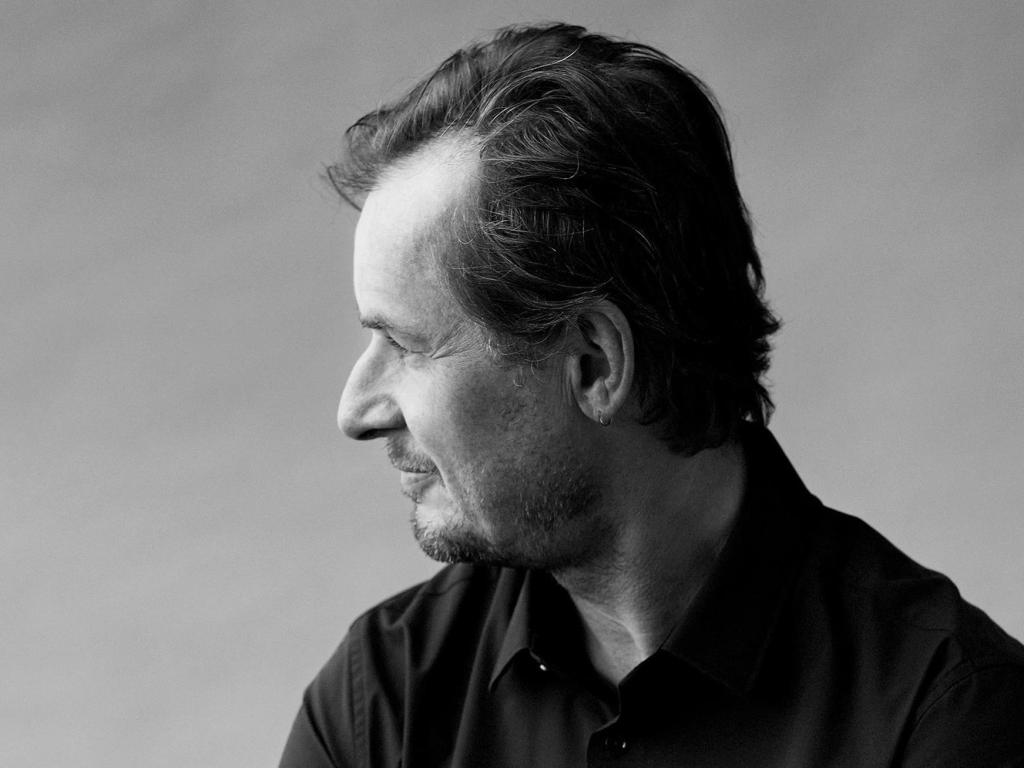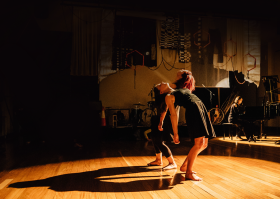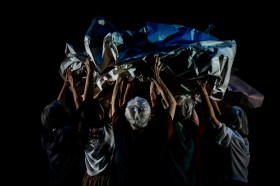A significantly expanded Australian Chamber Orchestra opened its 2018 Season in Hamer Hall at the Arts Centre Melbourne on Sunday afternoon with a program of four works whose composers all valued that the way to look forward is to look back. The program comprised Brahms’s String Sextet No 2 in G major, Op 36 (in an arrangement for large string orchestra by the ensemble’s leader, Richard Tognetti), Tchaikovsky’s evergreen Serenade for Strings in C major, Op 48 (1880) and two new works: Missy Mazzoli’s Dark with Excessive Light – Concerto for Contrabass and String Orchestra receiving its first performances on this tour and Anna Clyne’s Prince of Clouds (2012) a double concerto for two violins and string orchestra (divisi) being performed for the first time in Australia.
The performance opened with the work by Clyne, an English composer residing in USA. The excellent soloists on this occasion were Ike See and Glenn Christensen, both members of the ACO. Throughout, their material was similar often in canonic imitation reminiscent of the Bach double violin concerto. The composer writes, ‘when writing Prince of Clouds I was contemplating the presence of musical lineage – a family-tree of sorts that passes from generation to generation’. The 14-minute, single movement work juxtaposes and develops several contrasting musical elements, one lyrical and melodic with expressive suspensions, another aggressive, static and separated in blocks, with resultant harmonic and textural development. A sparse and serene opening with little vibrato and pulsating gestures in cellos and double bass reminded us harmonically and gesturally of Samuel Barber. Occasionally tonality slipped into atonality, but only as a brief diversion. Overall the work was tonally centred and sensuous if not sentimental. A carefully crafted composition, Prince of Clouds was nominated in 2015 for a Grammy Award for Best Contemporary Classical Composition. It was co-commissioned by the Chicago Symphony Orchestra, IRIS Orchestra, Los Angeles Chamber Orchestra and the Curtis Institute of Music.
The Tchaikovsky – a work the ACO has performed many times and understands maturely – resonated strongly with warmth, maturity and strident resolve from the opening bars. The second movement Walzer was delightfully lilted, the beautifully feathered melodic voice of the Élégie was most touching, as was the sincere ebullience of the Finale (Tema Russo) ending as it began with effusive certitude.
American composer Missy Mazzoli was co-commissioned by Bruce and Jenny Lane for the Australian Chamber Orchestra and the Aurora Orchestra to compose Dark with Excessive Light to honour ACO principal double bassist Maxime Bibeau’s 20 years playing with the orchestra this year. The title, a phrase from Milton’s Paradise Lost, is the surreal description of ‘God’ by one who is blind. The work opened effectively with the soloist playing the instrument’s lowest note E fortissimo against fractious col legno strings. Lyrical melodic material for the soloist is then accompanied by a finely traced harmonic soundscape with delicate arpeggiatic decoration. The descending Aeolian mode features effectively. This tonal and tuneful work eventually finds earth once again in E where we began. Bibeau gave an informed and heartfelt performance of the piece that looks to the Renaissance and other eras for melodic reference and string technique. Intonation by the soloist was excellent throughout. Performed on a 16th-century Italian double bass the reference to musical history was all the more poignant.
Before the Brahms, Tognetti, not wanting to make a political statement, made a political statement by reminding the audience that the survival of the Australian National Academy of Music (ANAM) needed to be fought for in Canberra a decade ago by its students and colleague musicians and that he was happy to share his stage on this occasion with ‘the future of music’. For the Brahms, the orchestra was expanded by numerous students from ANAM.
We might hear Brahms’s two rapturous string sextets as amongst his most intricate and densely textured chamber music compositions with irregular phrasing and peculiar harmonic development, a highly fragile narrative surface and involving sophisticated rhetoric. Successful performance of this music relies upon a most firmly understood, finely tuned hierarchy and balancing of primary and secondary information. Tognetti described his arrangement for a large string orchestra in the printed program as an aim ‘to democratise [the work]; to play it as a massed force on stage for the massed forces in the audience, and to transform it in an acute way that releases it from its historical trappings’. He continues that he is aware that ‘some may find this sacrilegious; others may be open to adaption. One thing is for sure: taking it out of aspic and arguing with it, keeps it alive’.
I did not find the arrangement sacrilegious, but largely ineffective. And I believe that I was open to adaptation. Some of this exercise worked well, particularly the strident material in the second movement Scherzo where narrative is comparatively clear cut. Here notes flew off the page with verve and brilliant ebullience. But there was much that was lost in more equivocal material in an often overwhelming wash of urgent exposition; while the original scoring’s infinite subtleties were regularly overlooked in favour of a predictable drive to the finish. These long passages were cumbersome and unyielding. That said the sound of the ensemble, but for intonation problems in the violins, was richly enjoyable, particularly the double viola and cello sections.
I do not believe that Tognetti’s arrangement has kept the work alive from ‘its historical trappings’ (is ‘elite’ chamber music what is referred to here?) nor was there any need for resuscitation in the first place. Further, I see no evidence to support that in its original chamber form the work resides in any kind of aspic.
3 stars out of 5
Australian Chamber Orchestra with Musicians from the Australian National Academy of Music (ANAM) – Tognetti, Tchaikovsky, Brahms
Hamer Hall, Arts Centre Melbourne
Sunday 4 February, 2018





